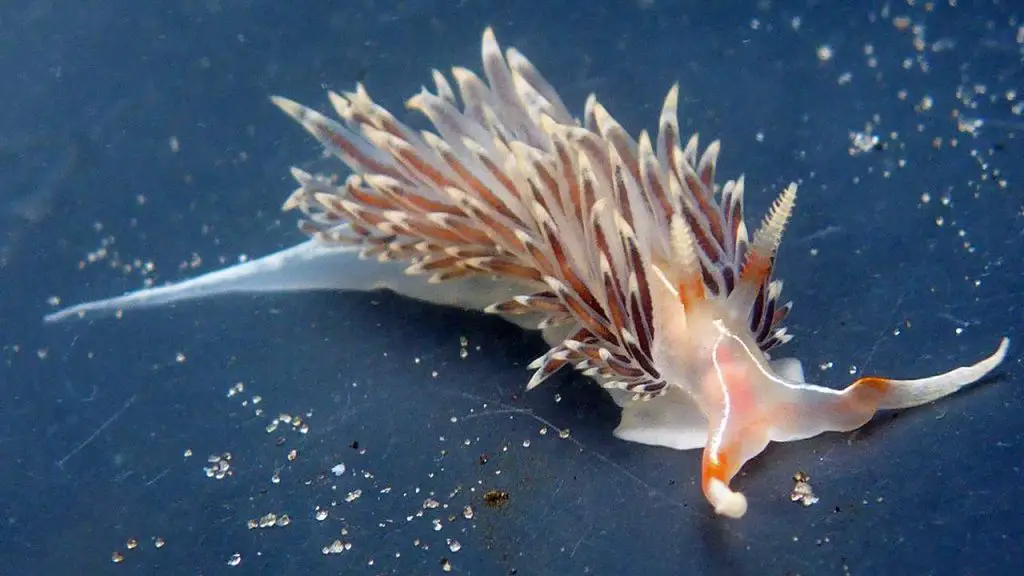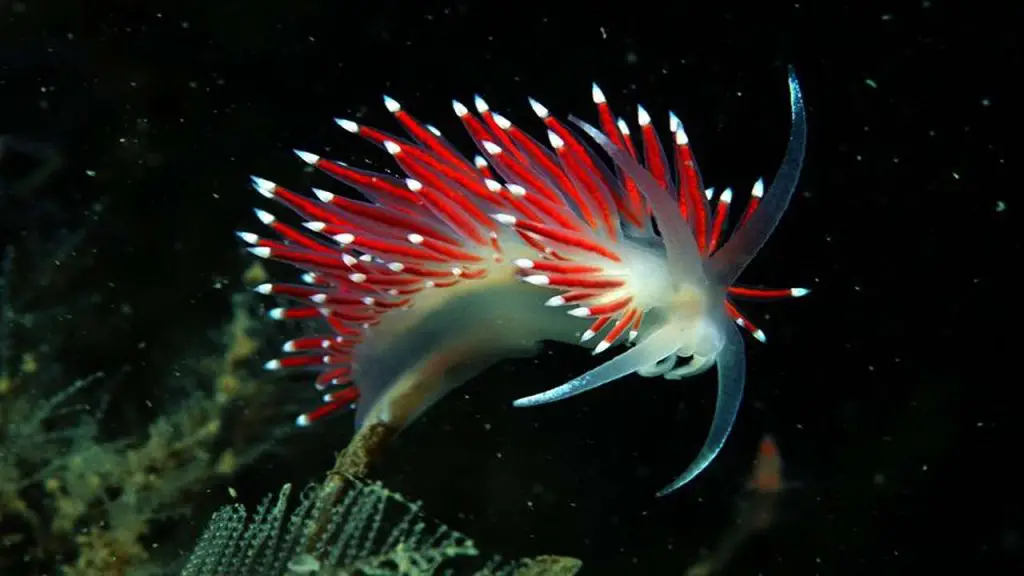As an Amazon Associate I earn from qualifying purchases.
Sea slugs, which come in a variety of colorful shells and intriguing shapes, are a type of mollusk found in both saltwater and freshwater environments.
You might spot them hanging out in coral reefs or areas rich in plant life.
These animals, such as the blue dragon, Spanish dancer, and nudibranch, keep their homes clean by eating algae, tiny animals, and rotting plants.
Not only do they tidy up the place, but they also serve as a tasty meal for larger ocean predators.
Despite some sea slugs being brightly colored and sporting eye-catching patterns like stripes or swirls, others may be more low-key in appearance.
And don’t be fooled by their size – these sea slugs can range from tiny to surprisingly large, with the giant Pacific sea slug topping out at a whopping two feet long!
With their diverse diet and unique feeding strategies, sea slugs are crucial players in marine ecosystems.
In this article, we’ll explore exactly what sea slugs eat, and how they go about finding their food. So, let’s dive in!
What Do Sea Slugs Eat?

Sea slugs are interesting sea animals that belong to the gastropod mollusk family. They have a lot of different foods they like to eat.
What they eat mostly depends on things like what kind of sea slug they are, where they live, and what food is around for them to eat.
Sea slugs have different ways of finding food in the ocean. Many of these are plant-eaters, munching on algae found on surfaces like rocks and coral reefs.
They have a unique tool called a radula, which they use like a scraper to gather and eat algae.
When they’re young, some sea slugs feast on tiny floating organisms called plankton until they’re grown enough for adult food.
Others are meat-eaters, hunting down jellyfish and other stinging creatures, and they’re well-equipped with special skills to catch and consume their prey.
Sea slugs can also chow down on various other sea creatures, using their senses to find them and their radula to gobble them up.
And then there are those with very specific tastes, targeting organisms like sponges, tunicates, and bryozoans, each serving its purpose in the sea slug’s world.
Whether they eat as herbivores, carnivores, detritivores, or have special diets, sea slugs are important for keeping the ocean healthy and balanced.
What do Baby Sea Slugs Eat?
Baby sea slugs, also known as larvae or juveniles, typically feed on plankton.
Baby sea slugs, just like their adult counterparts, are connoisseurs with a variety of dietary preferences!
There’s no single answer to what they eat, as it depends on the specific species.
Most sea slug species are highly specialized eaters, focusing on a particular food source.
This could be Some are herbivores, feasting on algae and other marine plant life and Others are carnivores, enjoying plankton, jellyfish, or even other sea slugs.
While specialized, some sea slugs can adapt their diet to what’s abundant in their environment.
Since baby sea slugs are basically miniature versions of their adult form, they’ll generally follow the same dietary path. So, if the adult sea slugs are algae nibblers, the babies will be too.
What do Blue Dragon Sea Slugs Eat?
Blue dragon sea slugs, also known as Glaucus atlanticus, mostly eat Portuguese man o’ war and jellyfish, which are types of sea creatures.
These sea slugs are special because they can eat the stinging cells from their prey, called nematocysts, and use them to protect themselves from danger.
What do Nudibranch Sea Slugs Eat?
Nudibranch sea slugs are different kinds of sea creatures that live underwater. They like to eat different things depending on what type they are.
Some of them eat plants like algae, while others prefer to eat meat, like small animals or other nudibranchs.
What do Saltwater Sea Slugs Eat?
Saltwater sea slugs” is a term that covers many different kinds of sea slugs because most of them live in saltwater. These sea slugs have all sorts of diets.
Some eat algae, some eat tiny plankton, others eat small sea animals, and some even eat decaying stuff found on the ocean floor.
What they eat depends on what kind of sea slug they are and where they live.
What do Spanish Dancer Sea Slugs Eat?
The Spanish Dancer is a type of nudibranch, and it’s a pretty hunter. It’s scientifically called Hexabranchus sanguineus.
These sea slugs mostly eat sponges. They also eat stinging creatures like hydroids and siphonophores, and they keep their stinging cells for protection.
Spanish Dancers have a special eating tool called a radula, which they use to scrape off bits of sponge and eat them up.
How do Sea Slugs Find their food?

Sea slugs have clever ways to find food underwater. One of their main methods is using their sense of smell.
They have special receptors on their bodies that can sniff out prey or food in the water.
Some sea slugs also have special eyes or tentacles that help them see movement or find food visually.
When they find something yummy, sea slugs use their radula, which is like a toothed tongue, to grab or scrape the food and eat it.
With their sharp senses and special eating tools, sea slugs are good at finding and eating food in the big ocean.
Conclusion
Sea slugs eat a lot of different things, just like the places where they live have lots of different living things.
Some sea slugs eat plants, while others hunt and eat other animals.
These amazing creatures are important in the ocean’s food chain, whether they’re munching on plants or hunting down prey.
When we learn about what sea slugs like to eat and how they find their food, it helps us understand how everything in the ocean works together.
FAQ’s:
Sea slugs can live for different amounts of time depending on their species and environment.
Some may only live for a few months, while others can survive for several years.
Yes, some sea slug species do eat jellyfish. They’re able to consume jellyfish and other cnidarians, often equipped with special defenses to protect themselves from the jellyfish’s stinging cells.
No, sea slugs need to stay in the water to survive.
They breathe through their skin, and if they’re out of water for too long, they’ll dry out and die.
It’s generally best to avoid touching sea slugs if you can.
Some sea slugs can release toxins or other substances when they feel threatened, which could be harmful if they come into contact with your skin.
Sea slugs come in a variety of vibrant colors, which can serve different purposes.
Some colors help them blend in with their surroundings as camouflage, while others warn predators that they’re poisonous.
Additionally, bright colors may also play a role in attracting mates for reproduction.
Amazon and the Amazon logo are trademarks of Amazon.com, Inc, or its affiliates.

